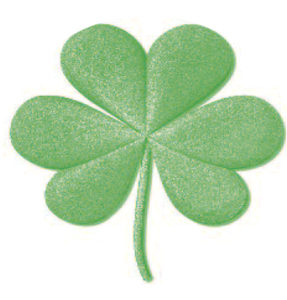 By Bobbie Sweeney
By Bobbie Sweeney St. Patrick’s Day—a great day for the Irish in America. It is not necessary that you come from Ireland or that you are born of Irish parents—everybody suddenly becomes part of the fun-loving, hard-drinking Irish culture on this festive day.
Whatever your favorite color happens to be, it changes to green on St. Patrick’s Day. Having an Irish name helps, but Germans, Italians, Greeks, Chinese and all the rest can have just as much fun drinking green beer, eating green food, and wearing green on this special day of the year.
Most cities in the United States have a parade on this day. Businessmen, churches, schools—everyone enters into the fun of making March 17 “a great day for the Irish.”
St. Patrick himself was born in England. He is credited with having converted all of Ireland to Christianity by his biographers. Patrick was 16 years old when he was captured by pirates, and taken to Ireland and sold as a slave. He learned to love the Irish people. When he escaped from slavery, six years later, he became a monk in France. His greatest desire was to return to Ireland as a missionary. He did return, and founded more than 300 churches.
Many legends are believed about St. Patrick. It is hard to say how true they are. It is said that he chased all the poisonous snakes out of Ireland and into the sea. The only snake he allowed to stay was a small brown snake that helped rid the country of insects. However, St. Patrick did change the color of the snake to green, so that it would blend in with the gorgeous greens of the enchanting countryside.
Another legend tells of how St. Patrick planted the shamrock in Ireland, then used the lovely three leaves of the plant to explain the Holy Trinity to the Irish people. One leaf represented the Father, one the Son, one the Holy Ghost, and all three grew from the same stem. As a result, the shamrock became the national flower of Ireland.
St. Patrick became the Patron Saint of Ireland. The anniversary of his death, March 17 in 461 A.D., has been celebrated in America since colonial days. At least 1/3rd of the men in George Washington’s army had been born in Ireland, and he encouraged them to celebrate St. Patrick’a Day in 1775. It was not until 1875 that the day was celebrated nationwide.
When visiting in Ireland, a taste of Irish wiskey is a must for all tourists—although the entire country is bone-dry on St. Patrick’s Day.
Whichever way you choose to celebrate, the Mountain States Collector hopes you have a gleeful day!















Follow Us